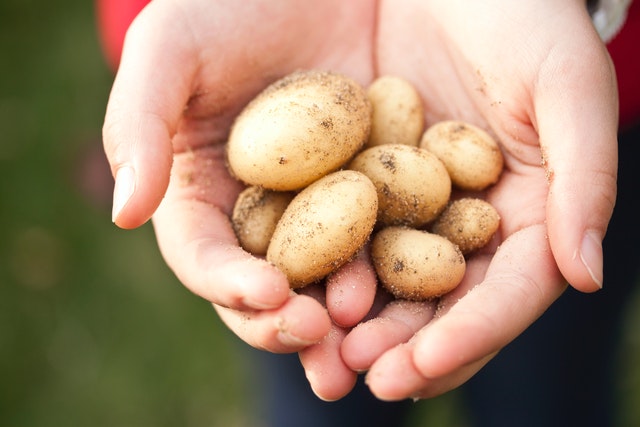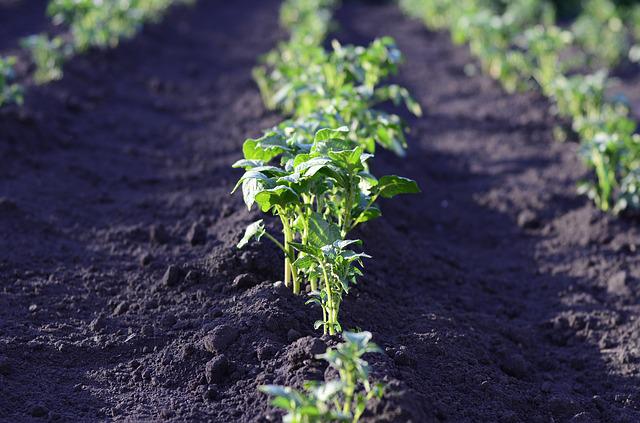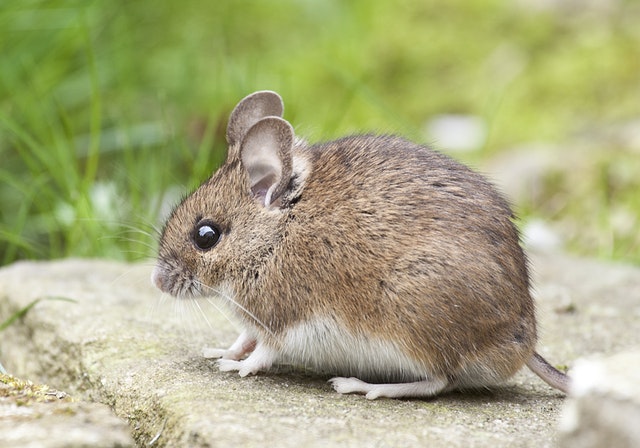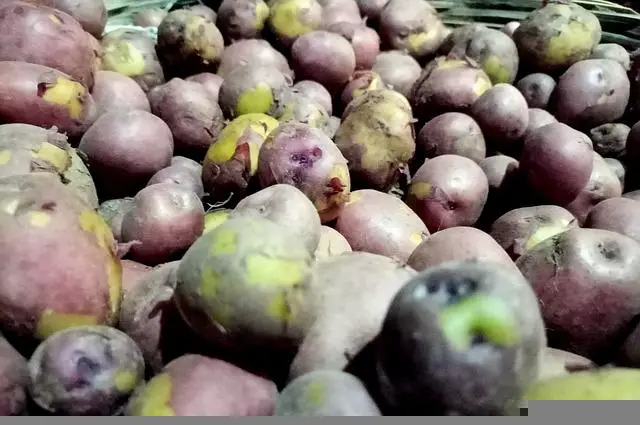For most gardeners, nothing gives more joy than harvesting large and healthy farm produce, including potatoes. After spending time and effort in the garden, it makes sense to expect a bountiful harvest. But several factors can cause you to reap small potatoes, despite all your efforts.
If you notice your harvest is not satisfying, you’ll probably be thinking – why are my potatoes so small?
Many factors can cause your potatoes to be small. They include inadequate nutrients, high temperatures, lack of sunlight, little water, or pests.
Sometimes, harvesting the potatoes early can also cause you to reap a tiny harvest. Some potato varieties also grow smaller than others. Additionally, soil that is too compact or heavy can also limit potato growth and result in small potatoes.
No matter the reason, you will likely feel unhappy after harvesting a few small potatoes. But it is important to find out the reasons behind it so that your next harvest can be huge.
In this article, we will look at the possible causes of small potatoes and possible solutions.
Just keep on reading to learn more!
Why Are My Potatoes So Small?

There are lots of reasons why your potatoes aren’t as big as you desire. Let’s take a look at 8 of them below.
1. Insufficient Sunlight
Usually, potatoes grow well when they get at least 6 hours of sunlight every day. So whenever you want to plant them, choose a sunny environment.
Little or no sun is one of the most common reasons you may be harvesting small potatoes. Sometimes, you may notice some tubers did not form underground at all.
Make sure no plants are blocking or preventing sunlight from reaching the potato plants.
Also keep in mind that the less sunlight your potatoes receive, the smaller their tubers will develop.
2. Little Watering

Just as sunlight is important to the potato plants, so is water. During the early stage of development, you need to keep watering them.
Not providing the plants with enough water will prevent them from absorbing the necessary nutrients. It may also cause the plants to lose moisture, resulting in low yields.
If you planted your potatoes on light soil, understand that they need more watering than those on heavy soil. Unlike light or sandy soils, heavy soils do not drain faster.
When using sandy soil, add some organic materials to it. This will allow the soil to retain enough water and also provide it with nutrients.
Around two weeks before harvesting your potatoes, it is best to stop watering them. This will make their skin tough, thus preventing damage while you are digging them out of the soil.
3. Harvesting Too Early
All plants mature at a particular time, including potatoes. So if you harvest your potatoes before they mature, you’ll reap small tubers. If you’re craving potatoes, don’t harvest all the tubers at the same time when they are not mature.
Around 2 to 3 weeks after the plants stop flowering, you can harvest your early potatoes. But maincrop potatoes need to spend enough time in the ground before you can harvest them.
4. Potato Variety

Consider the variety of the potatoes before planting them, as their sizes are different. When you plant small-sized potatoes, it is impossible to harvest large tubers.
Choose a potato variety that produces big tubers if you want to harvest large potatoes.
5. High Temperatures
Another common reason you might be harvesting a few potatoes is high temperatures. When the temperature is not favorable for the plants, you’ll notice the tubers are small and their numbers are few.
To have a bountiful harvest, the perfect temperature for the potatoes is between 60°F and 70°F. Temperatures above 75 degrees Fahrenheit can limit the growth of your potatoes.
Consider using a shade cloth hanging down from the posts to keep the soil temperatures down. You can also use a thick layer of mulch to keep the soil cool.
6. Lack Of Nutrients
Little or no nutrients can cause stunted growth in potato tubers. During the development stage, the potatoes use up a large amount of nutrients from the soil. Your potatoes will be tiny if they don’t get important nutrients in the right amounts.
Applying fertilizers that contain nitrogen, phosphorus, and potassium to the plants helps to produce a good harvest. Nitrogen builds up the stem, leaves, and all the green parts of the plants. When there is not enough nitrogen in potatoes, they tend to look yellowish.
Phosphorus helps the roots and flowers of the potato plants to develop perfectly. A moderate amount of potassium in potatoes helps to keep the plant healthy. It also helps the plants fight pests and diseases.
7. Disease Or Pest Infestation

There’s a high chance that your potatoes will not be big or numerous if pests or diseases attack them. Most of the time, pests can affect your plants by preventing them from absorbing the necessary nutrients.
Once you notice a part of the potato plants has been infested by pests, remove it from the others. Allow enough space between each plant to allow airflow, preventing moisture from accumulating on the foliage.
8. There Is A Little Space Between The Potatoes
When they start budding, potatoes absorb a lot of nutrients from the soil. As they grow, the potato plants need lots of space that will allow them to spread well.
So if you plant many potatoes in a single spot, they will likely compete for nutrients. That’s why their yield tends to be small during harvest.
When planting, ensure the potato seeds are planted at least 30 cm apart. Better still, create spaces that will allow you to walk easily between rows.
Learn more about tomatoes: How Many Potatoes Grow From One Plant?
Final Thoughts
We are sure you now have a better understanding of the reasons your potatoes are small. Factors such as sunlight, water, temperature, and nutrients play a major role in the growth of plants.
Find out why your potatoes are having stunted growth and work on them. Thereafter, you can continue to enjoy a bountiful harvest year in and year out.
Frequently Asked Questions
Can You Eat Very Small Potatoes?
Yes, you can eat small portions of potatoes if you feel like it. Small potatoes, also known as baby potatoes, are harvested before they grow fully. They can be made from any variety of potatoes that are usually grown throughout the year.
Depending on personal preference, you can fry, roast, or boil the baby potatoes.
How Long Does It Take For A Potato To Grow To Full Size?
On average, it can take around 10 weeks for small potatoes to grow to their size. But full-sized potatoes may not mature until about 80 to 100 days.
One simple way to notice your potatoes are ready for harvesting is when their flowers open or their buds drop. Using a fork or spade, carefully dig up the plants to prevent slicing them.
Can You Plant Potatoes Too Deep?
No, it is not advisable to plant potatoes too deep as it can cause them to rot before they start growing. Moreover, harvesting the potatoes may not be easy if their roots are too deep in the soil.
Ideally, potato plants do well when they are at least 6 to 8 inches below the soil. Planting your potatoes at the right depth can contribute to their overall growth.

Hey, I’m Lisa and I’ve been an avid gardener for over 30 years. I love writing, talking and living in the garden! Feel free to connect with me on my socials below

